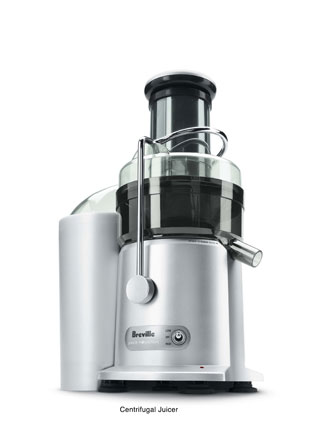Category Archives: Things We Like
Things We Like: 2014 Color of the Year

Post by Kyle St. Romain.
Pantone recently announced its color of the year for 2014: Radiant Orchid, replacing Emerald from 2013. You can read Pantone’s spring 2014 fashion color report. Sherman Williams followed suit announcing a more muted shade of purple called “Exclusive Plum” as its color of the year.
It shouldn’t be too surprising that purple is the consensus color considering that these decisions are made after surveying designers, manufacturers, and retailers throughout the world about the colors they plan to use in the coming seasons. The color of the year is more a formal announcement of the direction that’s already been decided, not necessarily something taking the design world by surprise (even if it is news to the rest of us).
With the announcement of the new color, however, you’re sure to notice purples popping up in all sorts of unexpected places. Expect the fashion industry to showcase the “it” colors in their spring catalogs, and interior designers tend to do the same. A little tip I learned in my interior design class is to thumb through Neiman Marcus’ spring catalogs for inspiration on how to create a color palette with that year’s trendy colors. I’m sure this tip holds true for other retailers as well. You can also use Adobe’s Kuler app to create a stunning color palette effortlessly.
Here’s a sample of a compound color palette based off of Radiant Orchid.

While you may be hesitant to incorporate such a vibrant purple with your personal style, you shouldn’t be. Radiant orchid, and all shades of purple for that matter, is surprisingly versatile. Radiant Orchid looks great accented with rich golds, sea greens, whites, and other shades of purple. It’s also quite simple to add a splash of Radiant Orchid in your home using a freshly painted accent wall, newly upholstered furniture, bed sheets, or a bright new throw rug. Whatever it is, it won’t be hard to find almost anything household or fashion related in Radiant Orchid this year.
The only consideration left is: How you feel about the color? As a TCU alumni, I couldn’t be more thrilled that purple is the color of 2014. While Radiant Orchid isn’t the same deep purple as TCU’s, it is nonetheless a very acceptable to me. A lot of the clothing I own winds up being some shade of purple, and now I may seem a bit trendier (if only for a year). I hope you enjoy the color of 2014 as well. If not, there’s always 2015.
If you’d like to read more about upcoming color trends, be sure to check out Pantone’s Spring 2014 Fashion Color Report.
Things We Like: Weekend Getaways

Post by Kyle St. Romain.
A weekend getaway, wherever it may be, can be just what you need to rejuvenate your mind and body. Going somewhere new does wonders for the spirit. New sights, new foods, new people, and a break from the mundane are all selling points in my book. Don’t take my word for it though; there have been a number of studies that all show that people who go on vacations live healthier and happier lives. Vacationers are more resilient to stress, and are more productive at work. Sound like something you could benefit from? It does to me.
A couple weekends ago I was fortunate enough to partake in a weekend trip to Napa Valley, and I definitely feel like my life is a little better for having done so.

For wine lovers, a trip to Napa is somewhat of a pilgrimage. Nowhere else in the world can you find such a concentration of vineyards. While I definitely have a lot to learn about wine (and the more I learn, the more I realize I don’t know), driving along Highway 29 is truly awe-inspiring. You’re sure to pass by wineries that you’re familiar with, or have at least heard of. It’s very cool to see where so many grapes are born, raised, and transformed into wines that are enjoyed throughout the world.
Even if you are not very interested in wine, the beauty of Napa is that is has something to offer just about everyone. The area is home to some of the most renowned restaurants, luxurious spas, and wide open spaces — which is a luxury in itself for those of us looking to get away from the congestion of city life.
I don’t know what it is, but I always sleep better on vacation. Usually exhausted from a day of adventure, I wake up looking forward to everything a new day offers. Good sleep also seems to follow me home, which is probably a symptom of recovering from all the excitement. With the end of 2013 quickly coming to a close, don’t let your vacation days go to waste this year. Instead, use them to go somewhere new to recharge your batteries and get a fresh perspective. You’re sure to feel better for it.
Things We Like: Sleeping Positions For Better Health

Post by Kyle St. Romain.
We all know that it’s important to get a good night’s sleep, and we’ve posted dozens of articles here on the Charles P Rogers blog to help you do just that. Today, we’re going to discuss another important element of a good night’s sleep: the position you sleep in. Keep reading below to learn more about how the most common sleep positions affect your health (and what they say about your personality).
The “soldier”: Flat on your back with your arms at your sides.
Widely considered the best sleeping position, lying on your back with your arms at your sides promotes a healthy spine and neck. However, people who sleep on their backs tend to snore more than others. Solider sleepers are usually more reserved, quiet, and have higher standards for themselves and others.
The “log”: On your side with both arms down.
The log is generally considered a good sleeping position; however, it can cause some neck pain as your shoulders put your head at an angle down towards the pillow. Loggers and are usually thought of as being easy going and sociable.
The “starfish”: Flat on your back, with your arms overhead.
Similar to the log position, starfish sleepers lie flat on their backs. Instead of leaving their arms at their side, however, starfish sleepers put them above their head — either on top of or underneath the pillow. While this position also promotes good spine alignment, some people may experience shoulder/neck pain over time due to the extra pressure put on the shoulders. Starfish sleepers tend to make good friends, and are good listeners.
The “freefall”: On your stomach, face down.
Sleeping on your stomach is said to help with digestion; however, it restricts breathing. After all, it’s pretty hard to breath through a pillow. As such, many people who sleep on their stomachs tend to tilt their head to one side or another which can put a lot of strain on your neck and back. This strain also causes many freefallers to experience restlessness, as they constantly adjust throughout the night in search of comfort. Freefall sleepers are typically brash and outgoing, but do not take criticism well.

The “fetal position”: Curled up in a ball on your side.
The fetal position is the de facto for comfort, and is by far the most popular position people sleep in. After all, it is the position we were first created in. If you’re having trouble with snoring or are pregnant, the fetal position may provide you with temporary relief. While the fetal position may seem like the most comfortable way to sleep, it can wreak havoc on your neck and back, and also restricts deep breathing. People who sleep in the fetal position are said to be tough on the outside and soft on the inside.
The “yearner”: On your side with both arms out.
Similar to the log, the yearner position is another popular sleep position. The yearner differs from the log in arm placement: they are stretched out in front, rather than being kept at your side. Yearners tend to be stubborn yet open-minded.
So if you’re looking for a better night sleep, you may want to try changing your sleep position. A new sleep position can not only help you sleep better, but can also help you stop snoring (which means your spouse will sleep better) or even get rid of that lingering pain in your neck.
Things We Like: Fresh Juice in the Mornings

Post by Kyle St. Romain.
Over the past couple of months, one of the things I’ve really come to look forward to in the mornings is fresh juice. So much so that it has quickly become part of my morning ritual. As we’ve looked at in past articles, motivational morning rituals can help you look forward to getting out of bed and starting your day the right way. In the past, a good cup coffee did it for me; however, fresh juice has proven to be even more satisfying.
Health Benefits of Juicing
One of the problems many people have with their diet is that they don’t eat enough vegetables. The good news is that adding fresh juice to your diet quickly solves this. Proponents of drinking fresh juice tout that it can reduce your risk of cancer, boost your immune system, help detoxify your body, aid in digestion, and even help you lose weight. In fact, there is a very specific juice regiment known as the Gerson Therapy that has shown positive results.
The one thing you don’t get from drinking juice vs. eating whole fruits and vegetables is the fiber. Your body also misses out on some of nutritional content from the produce; however, you can consume a lot more fruit and vegetable in juice form than you could eating them whole. Proponents view the lack of fiber as a good thing, giving your body less matter to have to process.
Whatever the studies show, I find that juice is a very clean form of energy. Unlike anything else I’ve ever ate or drank. It gets me going on the morning, and makes me feel great. The one downside about juice is that when the energy runs out, you really hit empty. It’s kind of like a sugar crash, and the empty pit in your stomach will tell you its time to eat something solid. That said, I’ve found that eating eggs or some other form of protein with the juice gives you more lasting energy.

Choosing A Juicer
There are a lot of different types of juicers you can chose from, and I spent a lot of time researching the one I thought would be best. The two broad categories of juicers to choose from are centrifugal and masticating.
Centrifugal juicers are the ones you’re most likely to find at a health store or juice bar. They extract juice from fruits and vegetables very quickly, but are not as good with leafy greats like Kale or Wheatgrass. They are also harder to clean, and can have expensive parts that you’ll need to replace over its life.
The other type of juicer, and the one I ultimately went with, is a masticating juicer. Instead of extracting the juice through centrifugal force, an auger slowly grinds up your fruits and vegetables to extract their nutritional goodness. It takes a little more time to chop up the produce small enough to fit in the juicer, but they are much easier to clean. I’m better with a knife than I am with washing dishes, so this was a big selling point for me. Masticating juicers are also better with leafy greens. They also process the produce at a lower speed, which many believe results in a more nutritional juice.

Juice recipes to get you started
If you’ve decided to take the plunge into the world of juice, which I strongly recommend you try, you’ll have a lot of time to perfect your own favorite recipes. To help get you on the right track, below is my every day juice recipe, which makes enough juice for 2-3 people. You can easily cut the recipe in half if you’re juicing for one.
- 4 Granny Smith Apples
- 6-8 Carrots, depending on how you’re feeling
- 2 inch cut of fresh Ginger
- 1 Lemon
- 1 Lime
- 1 Cucumber
- 1 handful of fresh Kale
When blueberries are in season, I also like to make what I call an antioxidant booster once per week. This recipe calls for:
- 2 pints of Blueberries
- 1 container of Pomegranate seeds
- 2 Oranges
- 1 Lime
Again, the above recipe makes enough for 2 people and can be halved for one.
So there you have it, just about everything you need to know to get started juicing. It is probably the best lifestyle change I’ve made for myself, and a number of my friends who’ve jumped on the juice wagon agree. Juicing is also inexpensive out here in California where fresh produce is abundant. On average, we spend $10-$20/week on produce which makes enough juice for 2 people 5 days per week. It’s a relatively low cost considering how good you feel drinking it. And once you make the initial investment in a good juicer, the per cup cost is quite low compared to what you’d pay at a juice bar.
Until next week, cheers to your health!
Things We Like: Getting Primed For A Better Night’s Sleep

Post by Kyle St. Romain.
Following this month’s theme of sleep studies, I have another bit of research that may help you sleep better. In a study titled, the effect of subliminal priming on sleep duration, which can be found online here, the authors found that subliminal exposure to certain words before going to sleep can improve the quality and duration of our sleep. The Boston Globe goes so far as to call it “subliminal Ambien.” To better understand how this works, we first need to understand a concept in psychology known as “priming.”
A simply way to describe priming is “that for a period of time after a word or other perceptual object is presented, less neural activity is required to process that same word of object.” In other words, repeated exposure to certain words or phrases makes it easier for your brain to associate them with a specific memory. As it relates to this study, priming your brain with sleepy word with the objective of getting to sleep faster is known as “goal-priming.” Okay, so how does it work? And more importantly, how can I prime myself to get to sleep faster?

The author of this study has stated that this type of “goal-priming” can be achieved by placing sticky notes or index cards with slumber-centric words like “calm,” “rest,” and “drift away” throughout your bedroom. So much so that the participants who were exposed to these sleepy words slept 47 percent longer and had lower heart rates than those who were exposed to “neutral” words. The study also found that the effects of subliminal priming are greater among participants who had trouble sleeping, suggesting that exposure to these subconscious cues may be a cost-effective treatment to help people with sleep problems. This may also help explain why bedtime stories are so effective for getting your kids to go to sleep.
However, this sort of goal-priming for better sleep is somewhat controversial, as other studies have been unable to replicate the results. Does it work, or not? We’ll let you be the judge. For me, it’s worth a try.

